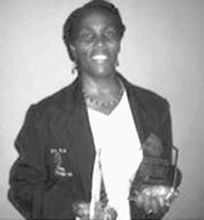The diabetic foot – ‘Why the cutting, cutting?’

by Joann Ince-Jack
Injury to the foot of a diabetic is the number one cause for amputations. A diabetic patient is 15 times more likely to undergo an amputation than a non-diabetic is. The leading causes of foot disease associated with diabetes include ischemia, infection and sensory neuropathy. Approximately 80 per cent of the patients with a diabetic foot ulcer have peripheral neuropathy. Peripheral neuropathy is damaged or disease affected nerves, which may impair sensation. In diabetics, neuropathy may cause painful cramps, fine muscle twitching, numbness to touch and tingling of extremities, muscle loss, bone degeneration, muscle weakness and changes in the skin, hair, and nails.{{more}}
One of the biggest threats to your foot is smoking. Smoking can cause small blood vessels to harden, decreasing blood flow to the feet, making wounds heal slowly, and this poor circulation will make your foot less able to fight infection and to heal. The poor circulation and lack of sensation represent “a medical double whammy,â making foot problems one of the most serious diabetes complications, most expensive and very difficult to treat. Loss of feeling often means you may not feel a foot injury. You could have a tack or stone in your shoe and walk on it all day without knowing, and infected blisters may go unnoticed. If your foot cannot feel heat, it is easy for you to burn them with hot water, hot water bottles, or heating pads; wounds and ulcers can worsen without the personâs knowledge and advance to grotesque levels, which are difficult to treat, due to lack of blood circulation.
Diabetics, you may have changes in the skin colour, shape; skin of your foot may peel and crack; you may have painful muscle wasting and weakness. At times, your feet may become very dry. The problem is that the nerves that control the oil and moisture in your feet no longer work. After bathing, dry your feet and seal in the remaining moisture with a thin coat of plain petroleum jelly, an unscented hand cream, or other such products. Do not put oils or creams between your toes. The extra moisture can lead to infection. The best way to help cold feet is to wear warm socks.
Calluses build up faster on the feet of people with diabetes because there are high-pressure areas under their feet. If not trimmed, they get very thick, break down, and turn into ulcers. Neglecting ulcers can result in infections, which in turn can lead to loss of a limb. Ulcers mainly occur on the ball of the foot or on the bottom of the big toe; those on the sides of the foot are usually due to poorly fitting shoes. Diabetics should never try to cut calluses or corns themselves. This can lead to ulcers and infection. Do not try to remove calluses and corns with chemical agents; these products can burn your skin. Those experiencing structural foot changes can have special therapeutic shoes to wear, rather than forcing deformed feet and toes into regular shoes.
There are some medications which can help some people to improve circulation. Exercise is good for poor circulation, as it stimulates blood flow in the legs and feet. Walk in sturdy, good-fitting, comfortable shoes, but do not walk when you have open sores. Inspect your feet every day, and seek care early if you do get a foot injury. Make sure your health care provider checks your feet at least once a year, more often if you have foot problems.
In St Vincent and the Grenadines, between 2008 and 2012 there was a total of 434 amputations (mainly toes & knees). Besides the physical limitations presented by diabetes foot problems, the emotional costs are equally severe; there is time lost from work, effects on self-esteem and there is a tremendous cost from absenteeism and loss in productivity. The emotional consequences are tremendous and the financial cost to the state is significant. The key to preventing amputations is self-management â daily inspection, daily hygiene and regular sensory testing.
Joann Ince-Jack is the vice-president of the SVG Diabetic/Hypertensive National Association









